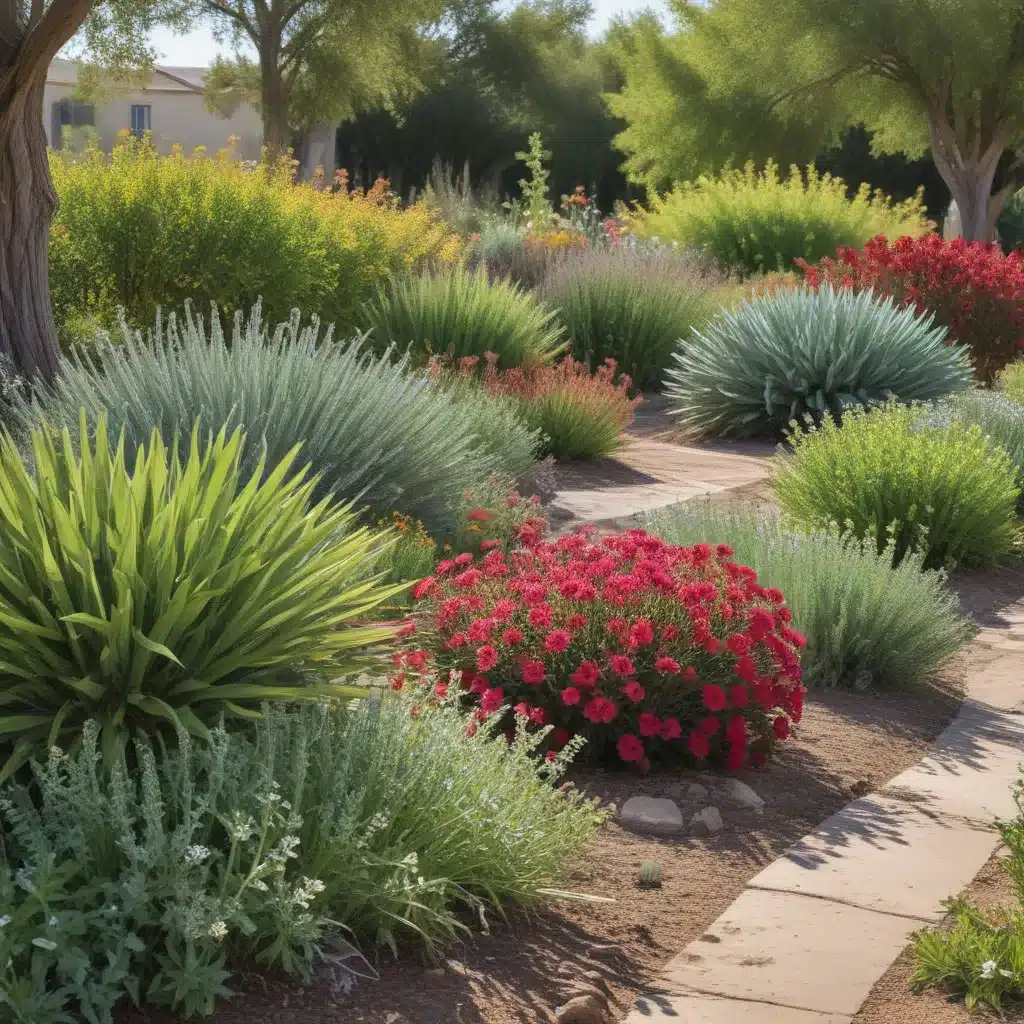
A Thirsty World Needs Dry Solutions
As I gaze out at my lush, verdant garden, I can’t help but feel a pang of guilt. With climate change wreaking havoc and droughts becoming more common, I know my water-hungry landscape is part of the problem. But must I really sacrifice my beloved blooms and greenery to save the planet?
Not at all, my friends! In fact, with a little creativity and the right plant choices, I’ve discovered that I can have a drought-tolerant garden that’s every bit as beautiful and captivating as my old water-guzzling one. And the best part? I’m doing my part to conserve this precious resource for generations to come.
Embrace the Dryness
The key to a successful drought-tolerant garden lies in selecting the right plants – those that have evolved ingenious mechanisms to thrive in arid conditions. These aqua-savvy specimens come with all sorts of clever adaptations, from waxy, reflective leaves that minimize water loss to deep root systems that can tap into hard-to-reach moisture.
Take the false blue indigo (Baptisia australis), for example. This hardy perennial sports lush, blue-green foliage and vibrant purple flowers, yet its roots can plunge up to 10 feet deep to seek out water. Or consider the silvery sage (Salvia argentea) with its fuzzy, water-repellent leaves – a true desert-dweller that thrives on neglect.
By embracing these drought-tolerant wonders, you can create a landscape that’s not only visually stunning but also environmentally responsible. And let’s be honest, who doesn’t love a plant that requires minimal fussing and watering? It’s a win-win situation all around.
Rethink Your Lawn
Of course, no discussion of water-wise gardening would be complete without addressing the elephant in the room: the thirsty lawn. Traditional green carpets of grass can suck up thousands of gallons of precious H2O each year, and in many regions, they’re simply not a sustainable option.
But don’t despair, fellow gardeners – there are plenty of alternatives that can give you that lush, inviting look without the heavy water demands. Native groundcovers like Sedum and Thymus species can create a carpet of color and texture that’s every bit as captivating as grass, yet they require a fraction of the water. Or consider swapping out turf for a xeriscape of drought-tolerant perennials, shrubs, and even ornamental grasses – a stunning solution that will have your neighbors green with envy (in a good way!).
Harness the Power of Hydro
Of course, even the most water-wise plants will need some irrigation, especially when they’re first getting established. But that doesn’t mean you have to resort to thirsty sprinklers or wasteful hoses. Instead, why not harness the power of hydro through the use of water-saving irrigation systems?
Drip irrigation, for example, can deliver targeted H2O directly to the root zone, minimizing evaporation and ensuring every drop counts. Or consider installing a weather-based irrigation controller that can automatically adjust watering schedules based on local conditions.
And let’s not forget about the wonders of rainwater harvesting! By setting up a simple rain barrel or cistern system, you can capture precious precipitation and use it to nourish your drought-tolerant beauties. It’s a renewable, eco-friendly solution that can save you a bundle on your water bills.
Get Inspired by Nature
Of course, creating a stunning drought-tolerant garden isn’t just about picking the right plants and irrigation systems. It’s also about tapping into the natural beauty and harmony of the great outdoors.
Take a cue from the Water Efficient Garden at the Idaho State Capitol Building – a living, breathing testament to the power of water-wise landscaping. Here, you’ll find a captivating array of native and adapted plants, all arranged in a way that mimics the rugged, yet breathtaking, landscapes of the American West.
And let’s not forget about the Water Efficient Garden at the Idaho Botanical Garden, where visitors can explore a diverse range of drought-tolerant species and learn about the latest water-saving techniques. It’s the perfect source of inspiration for anyone looking to create a sustainable, low-maintenance oasis of their own.
Embrace the Beauty of Brown
I know, I know – the idea of a “brown” garden might not sound all that appealing at first. But trust me, there’s a certain rugged charm to these water-sipping landscapes that can be absolutely captivating.
Take, for example, the Water-Wise Gardens in Fremont, California. Here, you’ll find a stunning array of drought-tolerant succulents and grasses, their earthy hues and architectural forms creating a visual feast that’s both serene and striking.
And let’s not forget about the power of contrast. By strategically incorporating pops of color and texture, you can create a drought-tolerant garden that’s anything but drab. Imagine a tapestry of silvery Artemisia, punctuated by the fiery blooms of Blanket Flower and the bold spikes of Liatris. It’s a stunning, water-wise masterpiece that would make even the most ardent lawn-lover swoon.
Conclusion: A Brighter, Drier Future
As the effects of climate change continue to unfold, the need for water-wise gardening has never been more pressing. But rather than see this as a burden, I choose to embrace it as an opportunity – a chance to create landscapes that are not only sustainable but also breathtakingly beautiful.
By ABC Home & Renovations and incorporating drought-tolerant plants, efficient irrigation systems, and clever design elements, we can transform our gardens into oases of resilience and wonder. It’s a future that’s greener, cleaner, and so much more satisfying than the water-guzzling landscapes of the past.
So why not join me in this exciting journey? With a little creativity and a whole lot of plant-loving passion, we can create gardens that not only conserve water but also inspire and delight. The possibilities are endless, my friends – let’s get growing!
















